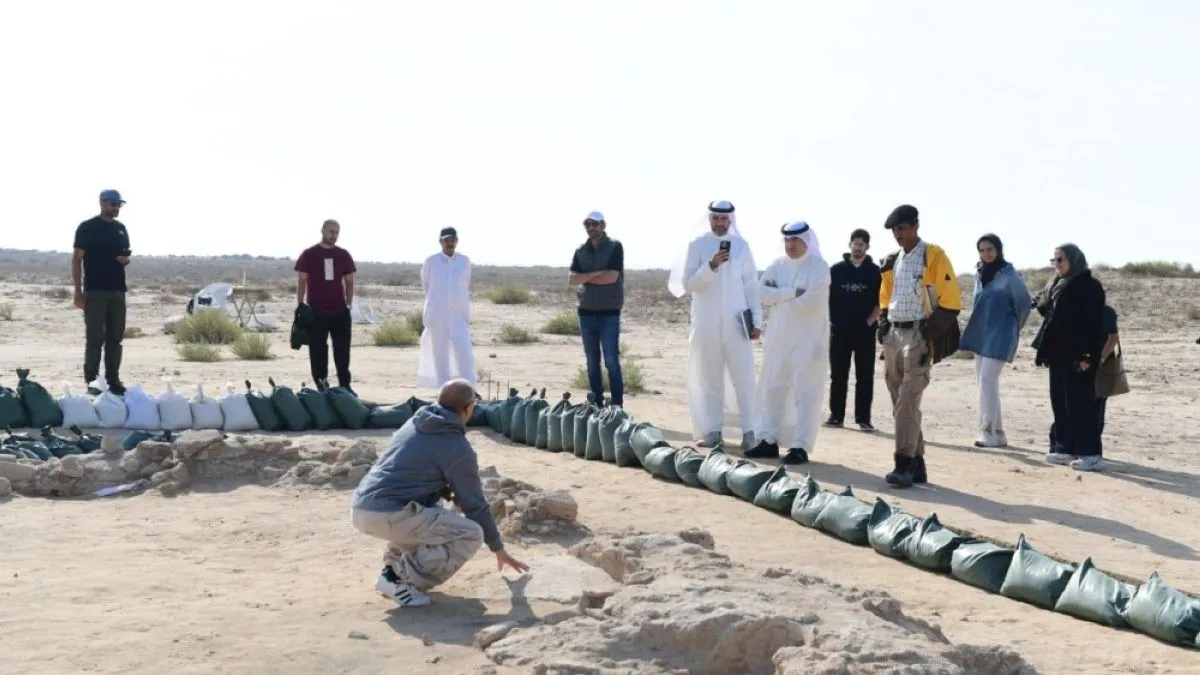- By Supratik Das
- Mon, 27 Oct 2025 03:58 PM (IST)
- Source:JND
In a remarkable archaeological breakthrough, a joint Kuwaiti–Danish team has uncovered a 4,000-year-old Bronze Age temple on Failaka Island, believed to be part of the ancient Dilmun civilization. The discovery was made public by Kuwait's National Council for Culture, Arts and Letters (NCCAL) and is considered to be one of the most important finds in the country in decades.
The temple, discovered beneath another Dilmun-era structure found last year, confirms that two temples were built on the same sacred site between 1900 and 1800 BCE, a rare architectural occurrence in the region. The discovery offers unprecedented insight into the Dilmun people’s religious life, urban planning, and their far-reaching trade networks across the ancient Gulf.
Two Temples, One Sacred Site
According to Mohammed bin Redha, Acting Assistant Secretary-General for Antiquities and Museums at the NCCAL, the newly excavated structure’s complete layout was found directly below a previously known temple. “Both temples date back roughly 4,000 years and were constructed one atop the other, signifying the site’s enduring spiritual and administrative importance,” he said.
Digging occurred at Tell F6, a mound east of the Dilmun temple and palace complex. Archaeologists recovered stone foundations of a rectangular, multi-roomed building, as well as pottery, beads, and characteristic early Dilmun-type seals. These artifacts connect Failaka's temple architecture with parallels in Bahrain and eastern Arabia, areas at the heart of Dilmun's cultural and commercial influence.
Rewriting History Of Gulf
Dr. Stefan Larsson, head of the Danish archaeological mission, described the find to the local media as “a major step toward understanding the religious practices and urban planning of the Dilmun Kingdom.” He noted that the uncovered artifacts, including seal impressions used for trade and administrative purposes, highlight Failaka’s role as both a commercial hub and a spiritual center.
Failaka Island, located around 20 kilometers off Kuwait’s coast, was a crucial point in Bronze Age trade routes connecting Mesopotamia, eastern Arabia, and the Indus Valley. Archaeological evidence suggests Dilmun acted as a mediator in exchanging copper, textiles, beads, and gemstones between these ancient civilisations.
ALSO READ: Did NASA Just Find Proof of Ancient Life On Mars? Here's What The 'Sapphire Canyon' Reveals
The discovery of the dual temples, both dating back over 4,000 years, adds a vital chapter to the story of Dilmun, the fabled “land of purity and abundance” mentioned in Mesopotamian texts, reaffirming Kuwait’s place at the crossroads of early human civilisation.

